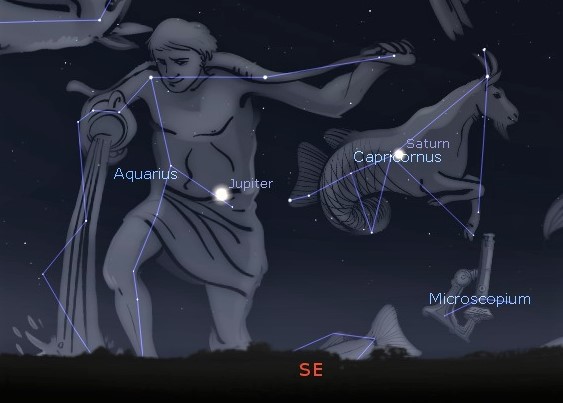This Week’s Sky at a Glance, 2021 May 8 – 15 ~by Curt Nason
With the pandemic restricting many activities, astronomy has become a popular alternative hobby. Regardless of what equipment you have your initial enthusiasm will likely start to wane, and there are dozens of excuses for passing up a clear sky. A cure for that is to set observing goals, one or several that are attainable but challenging. I have three goals that are ongoing: to observe every day I can, even if just for a few minutes; to spot the planet Mercury with binoculars at least once in each of its three morning and evening annual appearances or apparitions; and to observe any comet within reach of my equipment without having to travel a great distance, if at all.
A useful goal for those starting out and which requires no equipment is to learn and pick out the constellations. Theoretically, we can see all or parts of 66 of the 88 constellations from New Brunswick. An initial goal of 50 is doable over a year, and challenging if you live in a light polluted area. Meteors require no equipment and a few appear every hour in a dark sky. Try for 25 or 50 in a year, knowing you can pad your total during several annual meteor showers, especially in mid-August and mid-December. It helps to maintain a record of your observations, including dates, times, locations, what you observed and any other details you want. My logbooks go back 21 years.
The Royal Astronomical Society of Canada (RASC) has observing lists for various levels of experience, accessible through their website (rasc.ca) under the Observing tab. There are three programs for beginners, including two for exploring features of the Moon using binoculars or a small telescope. The other is the Explore the Universe Program, which includes 110 objects in five categories: Constellations and Bright Stars, the Moon, Solar System, Deep Sky Objects, and Double Stars. By recording your observations for half the objects in each category of this program you can apply for a certificate and pin. You can download the lists for the other programs but the certificates and pins are for members only.
This Week in the Solar System
Saturday’s sunrise in Moncton is at 5:55 am and sunset will occur at 8:36 pm, giving 14 hours, 41 minutes of daylight (6:02 am and 8:39 pm in Saint John). Next Saturday the Sun will rise at 5:46 am and set at 8:45 pm, giving 14 hours, 59 minutes of daylight (5:54 am and 8:47 pm in Saint John).
The Moon is new and at apogee on Tuesday, making it the most distant Moon we won’t see for the year. The slim crescent will pass to the left of Venus on Wednesday evening and of Mercury on Thursday, and then it visits Mars next Saturday to celebrate International Astronomy Day. Venus shares a binocular view with the Pleiades star cluster during the first few days of the week. Around 5 am this week Jupiter and Saturn are about 20 degrees above the southeast horizon and 16 degrees apart.
With astronomy meetings and outreach activities on hold, you can watch the local Sunday Night Astronomy Show at 8 pm and view archived shows.
Questions? Contact Curt Nason.

